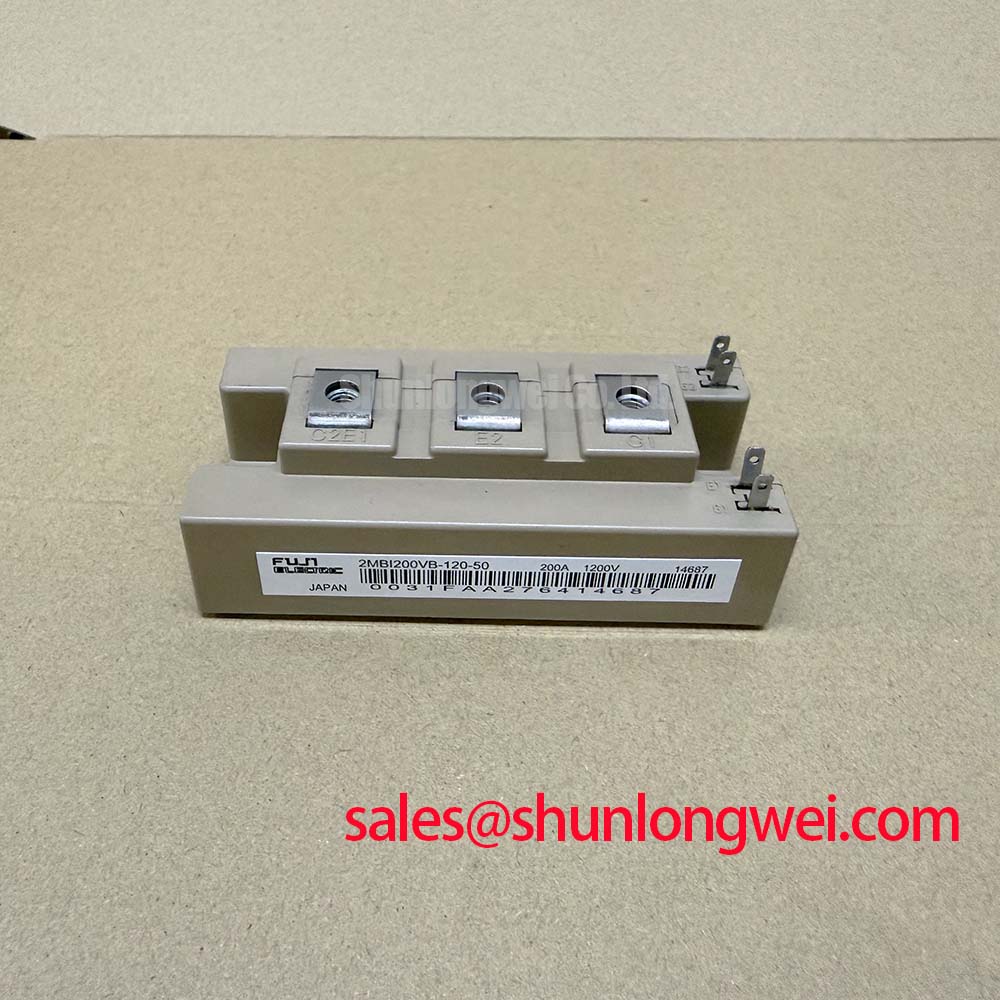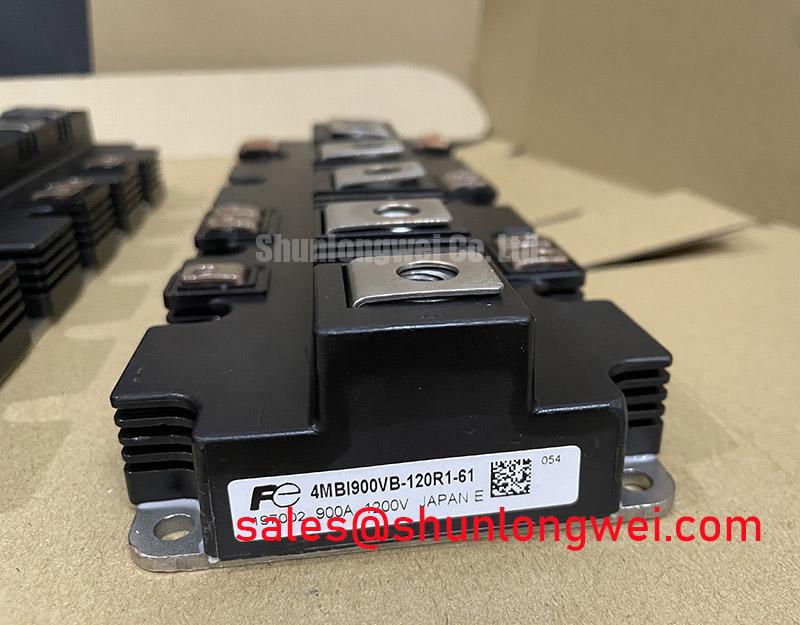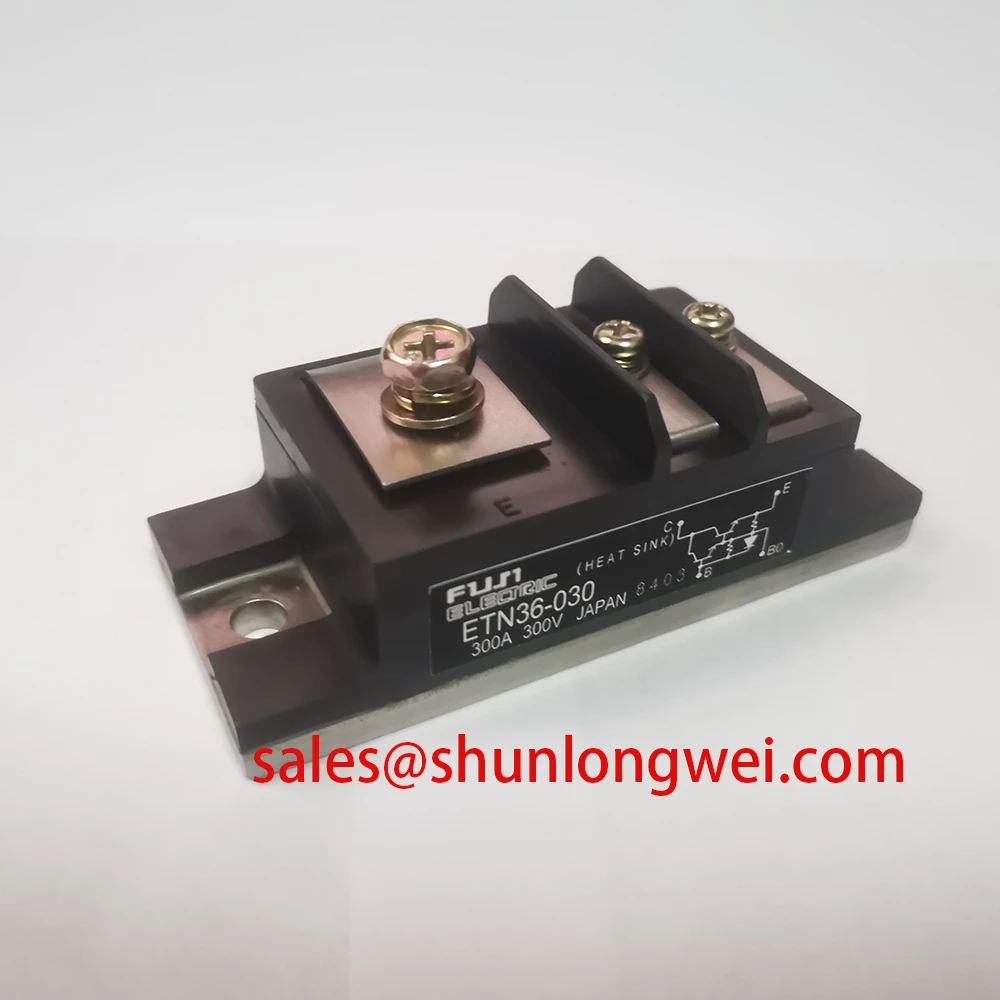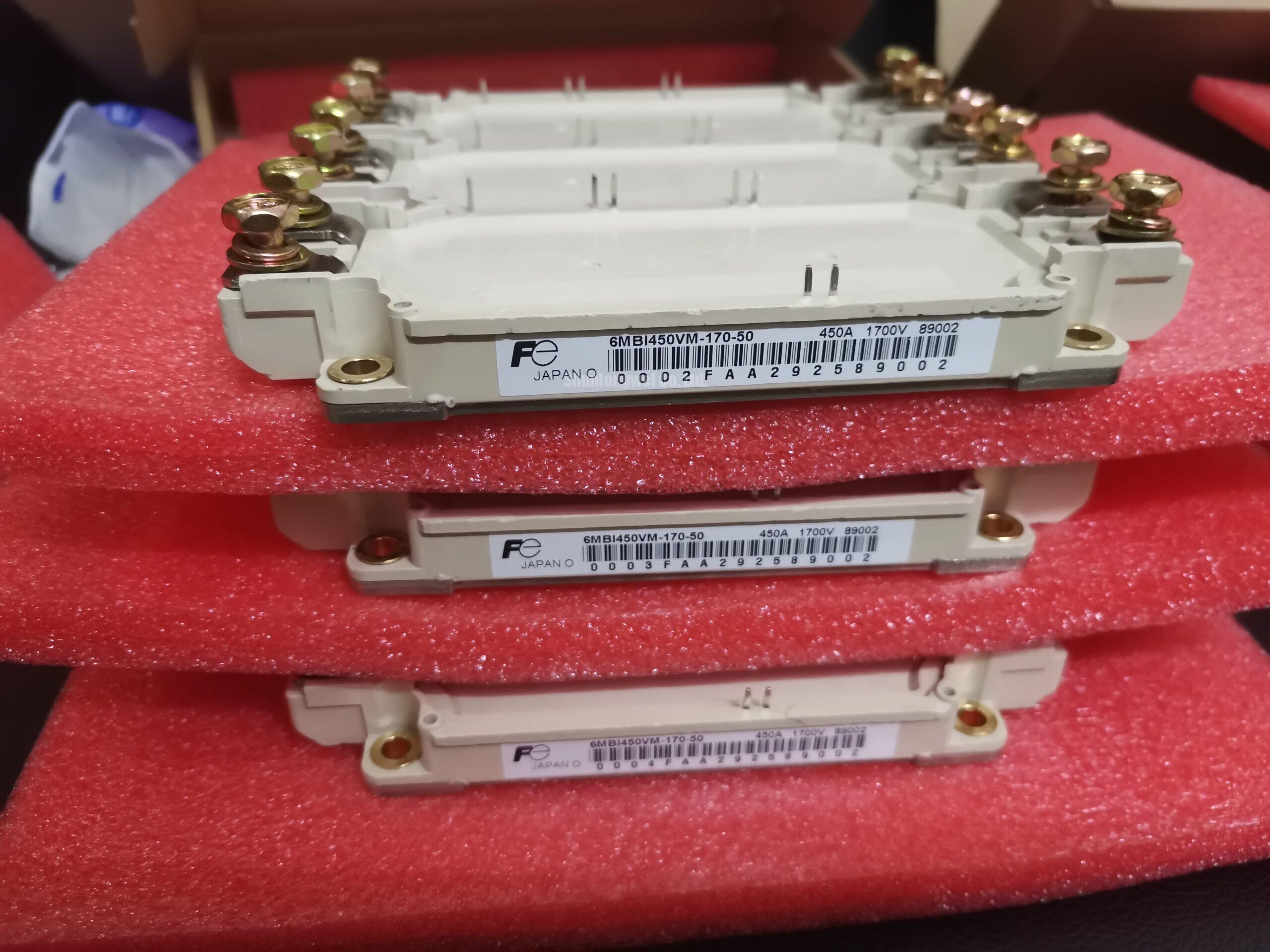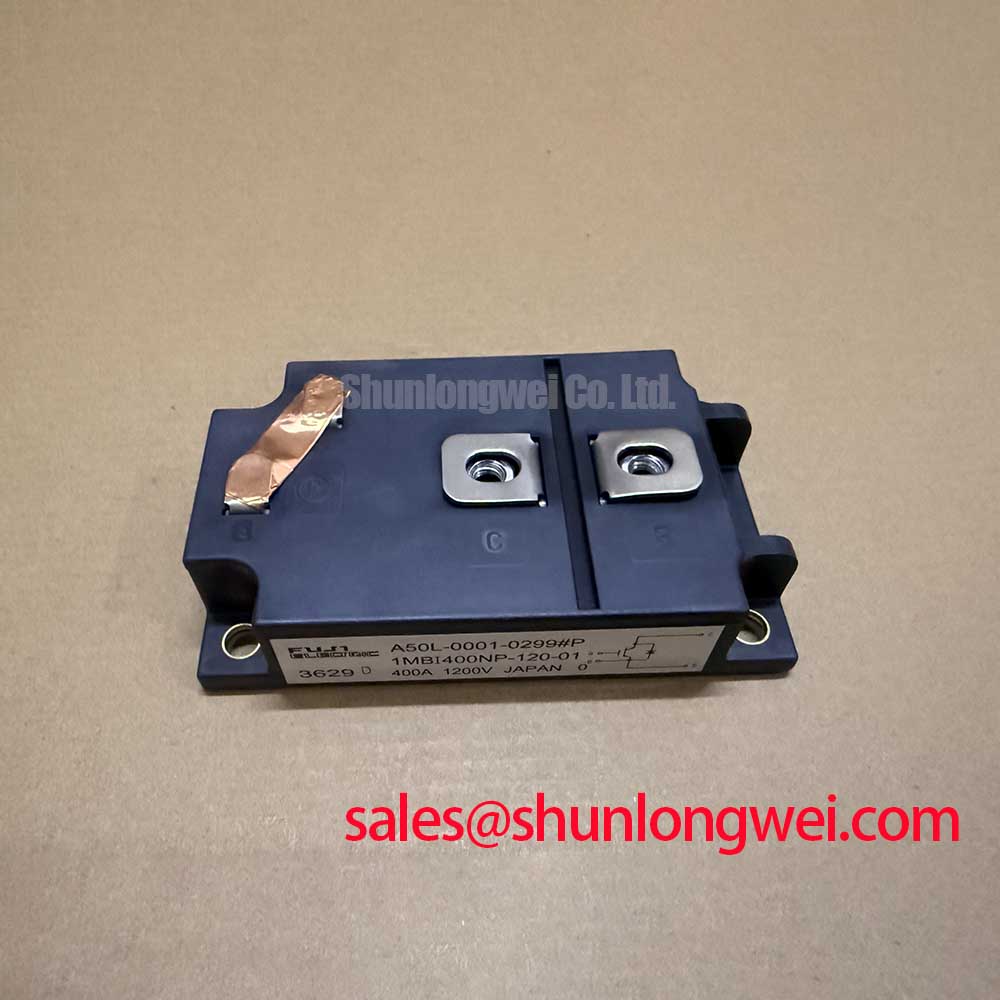Content last revised on November 15, 2025
Fuji 1MBI400HH-120-50 IGBT: High-Speed Switching Module
Engineered for High-Frequency Power Conversion Efficiency
The Fuji Electric 1MBI400HH-120-50 is a high-speed IGBT module designed to minimize total power losses in demanding, high-frequency applications. This single-pack module delivers a superior balance of low saturation voltage and agile switching dynamics, making it an excellent foundation for compact and efficient power systems. Its performance is tailored for engineers developing next-generation inverters and power supplies where thermal management and energy conservation are primary design drivers. This component directly addresses the need for fast, clean switching in high-power converters by combining robust electrical characteristics with a low-inductance package design.
- Core Specifications: 1200V | 400A | VCE(sat) 1.7V (typ)
- Key Benefits: Minimized switching losses; Reduced thermal load.
Datasheet Parameters for Efficiency-Critical Designs
The technical specifications of the 1MBI400HH-120-50 are optimized for applications where switching performance is paramount. The following parameters, drawn from the official datasheet, provide the data needed for detailed performance analysis and thermal modeling. For comprehensive information, please refer to the product documentation.
| Parameter | Test Condition | Value |
|---|---|---|
| Collector-emitter Voltage (VCES) | - | 1200 V |
| Continuous Collector Current (IC) | Tc = 80°C | 400 A |
| Collector-emitter Saturation Voltage (VCE(sat)) | IC = 400A, Tj = 125°C | 1.7 V (typ) / 2.2 V (max) |
| Turn-off Switching Time (toff) | IC = 400A, Tj = 125°C | 0.45 µs (typ) |
| Total Switching Loss (Ets) | IC = 400A, Tj = 125°C | 21.0 mJ/pulse (typ) |
| Thermal Resistance, Junction to Case (Rth(j-c)) | IGBT | 0.058 °C/W |
For a complete list of specifications, Download the Datasheet.
Empowering High-Frequency Power Conversion Systems
The Fuji Electric 1MBI400HH-120-50 is engineered to excel in power conversion topologies that operate at elevated switching frequencies. Its specific characteristics enable designers to improve system-level performance and reliability across several key industrial sectors.
Core Application Areas
- High-Frequency Power Supplies: In systems like industrial welding equipment and induction heaters, the module's fast turn-on and turn-off times (0.40 µs and 0.45 µs respectively) reduce switching losses, enabling higher operational frequencies which can lead to smaller magnetic components and greater power density.
- Uninterruptible Power Supplies (UPS): The low VCE(sat) of 1.7V minimizes conduction losses, which is critical for the overall efficiency of online UPS systems that operate continuously. This directly translates to lower energy consumption and reduced cooling requirements.
- Motor Drives and Servo Control: Fast and precise switching control is fundamental in advanced Servo Drives. The module's performance facilitates high-resolution control signals, resulting in smoother motor operation and improved positioning accuracy in robotics and CNC machinery.
For high-frequency (>10kHz) converters up to ~250kW, the 1MBI400HH-120-50 is a primary candidate due to its sub-0.5µs switching times. For applications requiring a different current rating but similar performance, the dual-pack 2MBI300HH-120 offers a 300A alternative from the same HH-series.
An Engineering Review of Loss Reduction Characteristics
A deeper analysis of the 1MBI400HH-120-50's electrical parameters reveals a design focused on minimizing the two primary sources of power loss in an IGBT: conduction and switching.
Conduction Loss Analysis: The collector-emitter saturation voltage, or VCE(sat), is a key determinant of heat generated while the IGBT is in its 'on' state. A low VCE(sat) of 1.7V at 400A is analogous to low friction in a mechanical system; it ensures that a minimal amount of energy is wasted as heat when current flows through the device. This characteristic is essential for maintaining high efficiency, especially under heavy load conditions.
Switching Loss Mitigation: What defines the 1MBI400HH-120-50's performance? Its low VCE(sat) of 1.7V and fast 0.45µs turn-off time. Total Switching Loss is a function of how quickly the device can transition between its on and off states. The HH-series IGBT technology provides the agile switching dynamics needed to keep these losses low. This is particularly important as switching frequencies increase, because switching losses become a more dominant factor in the total power dissipation budget. You can find more details on this topic in our guide to decoding IGBT datasheets.
Industry Context and Strategic Fit
The drive for greater energy efficiency and power density is a defining trend across the power electronics industry. Regulations and market demands push for smaller, lighter, and more efficient power conversion systems. The 1MBI400HH-120-50 directly supports these objectives by enabling engineers to design systems that waste less energy as heat. This not only reduces operating costs but also simplifies thermal management, potentially lowering the bill of materials by allowing for more compact cooling solutions. By focusing on loss reduction, this module provides a strategic advantage for developing competitive and compliant power systems.
Data-Informed Component Evaluation
As a distributor, we provide factual data to support your component evaluation process. The 1MBI400HH-120-50 is one of many high-performance IGBTs available for power system design. Its defining characteristics are a low VCE(sat) for its current class combined with fast switching, a combination that is not always present in general-purpose modules. When evaluating alternatives, engineers should carefully consider the trade-offs between conduction losses, switching losses, and short-circuit withstand time to align the component's strengths with the specific priorities of their application. A detailed review of these parameters in datasheets is crucial for an optimal selection. Our resource on preventing common IGBT failures offers further context for robust system design.
Technical Inquiries on the 1MBI400HH-120-50
What is the typical collector-emitter saturation voltage (VCE(sat)) for the 1MBI400HH-120-50 under full load conditions?
According to the datasheet, the typical VCE(sat) is 1.7V when measured at a collector current of 400A and a junction temperature of 125°C. The maximum rated value under these conditions is 2.2V.
How do the switching characteristics of the 1MBI400HH-120-50 contribute to lower power losses in high-frequency applications?
The module's fast turn-on (0.40 µs) and turn-off (0.45 µs) times minimize the duration of the transition period where both voltage and current are high, which is when most switching loss occurs. This rapid transition results in lower energy loss per switching cycle (Ets), a critical factor for maintaining high efficiency as operating frequencies increase.
What is the significance of the 18 nH internal inductance, and how does it impact gate drive and snubber circuit design?
The low internal package inductance of 18 nH is a significant advantage in fast-switching circuits. It helps to minimize voltage overshoot and ringing during turn-off, reducing voltage stress on the IGBT. How does low internal inductance benefit design? It reduces voltage overshoot, enhancing reliability in fast-switching circuits. This can simplify the design of snubber circuits and allows for cleaner gate control signals, contributing to more reliable and efficient operation.
What is the maximum junction temperature (Tj max) this module can safely operate at?
The 1MBI400HH-120-50 is rated for a maximum operating junction temperature of 150°C. Continuous operation near this limit requires careful thermal management to ensure long-term reliability.
A Strategic View on Power System Design
Selecting a component like the Fuji Electric 1MBI400HH-120-50 is a strategic decision that influences not just immediate performance but also the long-term viability and competitiveness of a power system. Its focus on minimizing both static and dynamic power losses positions it as a key enabler for future designs that must meet more stringent efficiency standards. By leveraging its high-speed capabilities, engineering teams can explore more advanced and compact power topologies, pushing the boundaries of what is possible in power density and performance and aligning their products with the global trend towards electrification and energy conservation.









